
by Erica Frank
I have been greatly enjoying the new Batman tv series. Campy costumes, over-the-top acting, wacky super-science gizmos, silly plots, the chance to see several of my favorite comic book characters on a screen; it's all good fun.
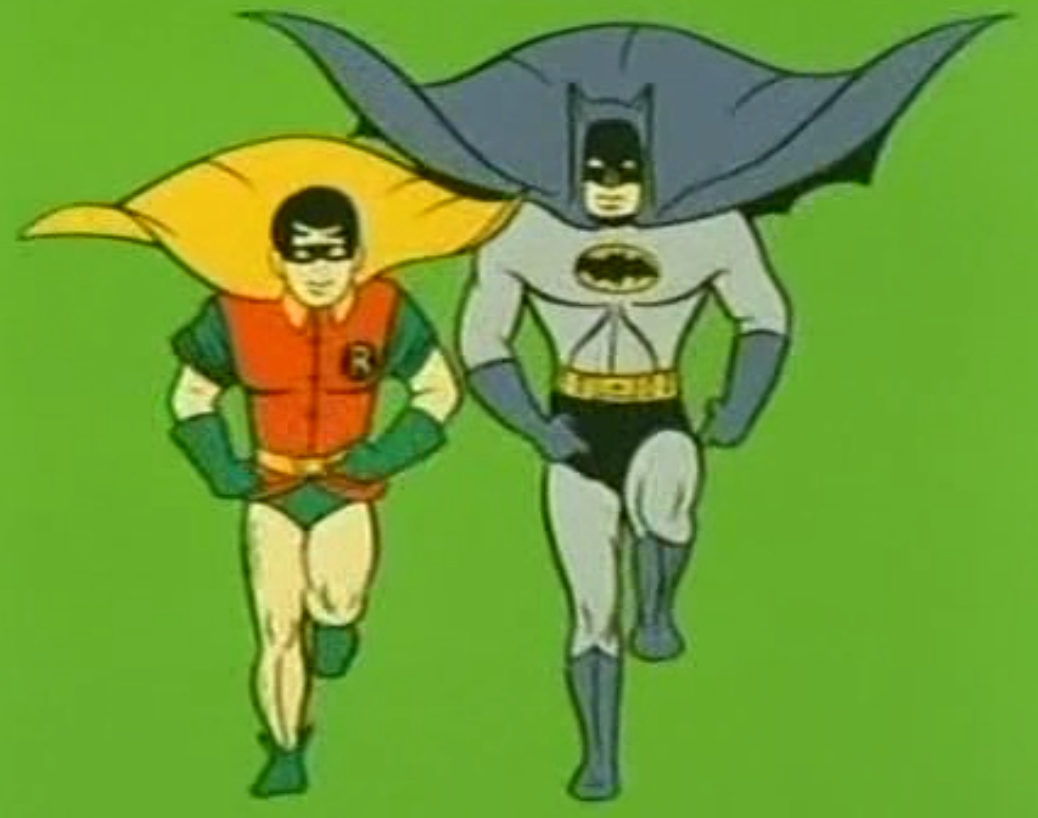
…It is not, however, amazing storycrafting, believable characters, thoughtful worldbuilding, or plausible traps and clever solutions. This is definitely a "kick your feet up and relax your brain before watching" show. If you have some favored intoxicants, you may wish to indulge in them first. Trust me. It'll help.
The Batman Drinking Game
The best way to watch this show: Before it starts, get yourself a beer, glass of wine, or couple of shots of something harder. Every time you see a gizmo that can't actually work as shown, take a sip. Every time Robin says, "Holy [something]!," take a sip. When either of the Dynamic Duo is trapped, take a sip; if they're both trapped, take two. Every time a supposedly valuable item, like a museum statue, is destroyed during the obligatory heroes-vs-thugs slugfest, take another sip. By the time the show is over, you'll be pleasantly relaxed—unless you actually know much about science and technology, in which case, you'll have left "relaxed" in the dust and be on your way to "blitzed."
This is not a show for careful thinking. This is a show for enjoying nostalgic thoughts about your childhood heroes and watching them climb up buildings so they can beat up the bad guys in a large warehouse room.

The show's opening has cartoon Batman and Robin tackling cartoon villains; a few old favorites like the Joker are visible, but most are nameless thugs. The theme song is catchy (and simple, which you'll need if you're playing the drinking game). It works nicely as a reminder that this isn't a serious crime drama—it's a live-action version of comic books, full of goofy technology, ridiculous villain shenanigans, and grandiose gizmo-speak solutions to bizarre plots.
Our Heroes and Villains
Adam West portrays both Bruce Wayne and Batman as polite, honest, and serene to the point of parody. He is very safety-conscious: he insists that Robin fasten his "bat-seatbelt" for a trip of only a few blocks. (He has a lot of bat-gear. A plethora of bat-gear. Everything Batman uses is bat-themed.) He's prone to saying things like, "This is just the first stitch in a large tapestry of crime." Yet he never seems angry, just disappointed that so many people have turned to villainy instead of hard work. At no point does he ponder that being born a millionaire might have some impact on his ideas of how easy it is to find gainful employment.
Burt Ward's Robin is excitable and clever; he's the one who figures out most of the riddles and other puzzles they face. When he's Dick Grayson, he's an ordinary teenager, albeit one with less interest in dating than most teens I've known. Robin, we are informed, is not old enough to get a driver's license. I don't know what the driving age in Gotham is; it's 16 in California and most other states. Robin is apparently a very mature 14 or 15. We pick up a few extra details about him: He speaks Spanish and French but struggles with algebra. At one point, the villains putting him in a complex trap mentioned that he weighs 132 pounds and 10 ounces. He and Bruce are often shown engrossed in intellectual pursuits.

The two of them live with Alfred, their butler, who is in on the big secret, and Dick's Aunt Harriet Cooper, who is not. She's under the impression that Bruce and Dick go on a lot of fishing trips. Overnight fishing trips, in some cases. She must be Dick's mother's sister. Or maybe she's a widow, and was Harriet Grayson in her youth. (Bruce also calls her "Aunt Harriet," so maybe she's his aunt.) Dick's parents aren't mentioned, but obviously his origin story isn't quite the same as in the comics—while the murder of Bruce's parents is mentioned, nothing is said about Dick's time before he lived at "stately Wayne Manor."
Batman and Robin regularly cooperate with the police: Commissioner Gordon, whom we know from the comics, and Chief O'Hara, new to the tv show, are both happy to turn over all the super-villain crimes to our heroes. The entire police department is grateful for the costumed crimefighters. I'm not sure whether the officers are horribly incompetent, or just happy to have someone else get strapped to the inside of a giant bell.
Each story is two episodes, with the first ending on a potentially fatal cliffhanger. (Often, Robin in a death trap.) The seventeen stories—34 episodes—of the first season involve several infamous villains from the comics and a small handful of new ones. The Riddler, played by Frank Gorshin, appears four times. His cackling is delightful.
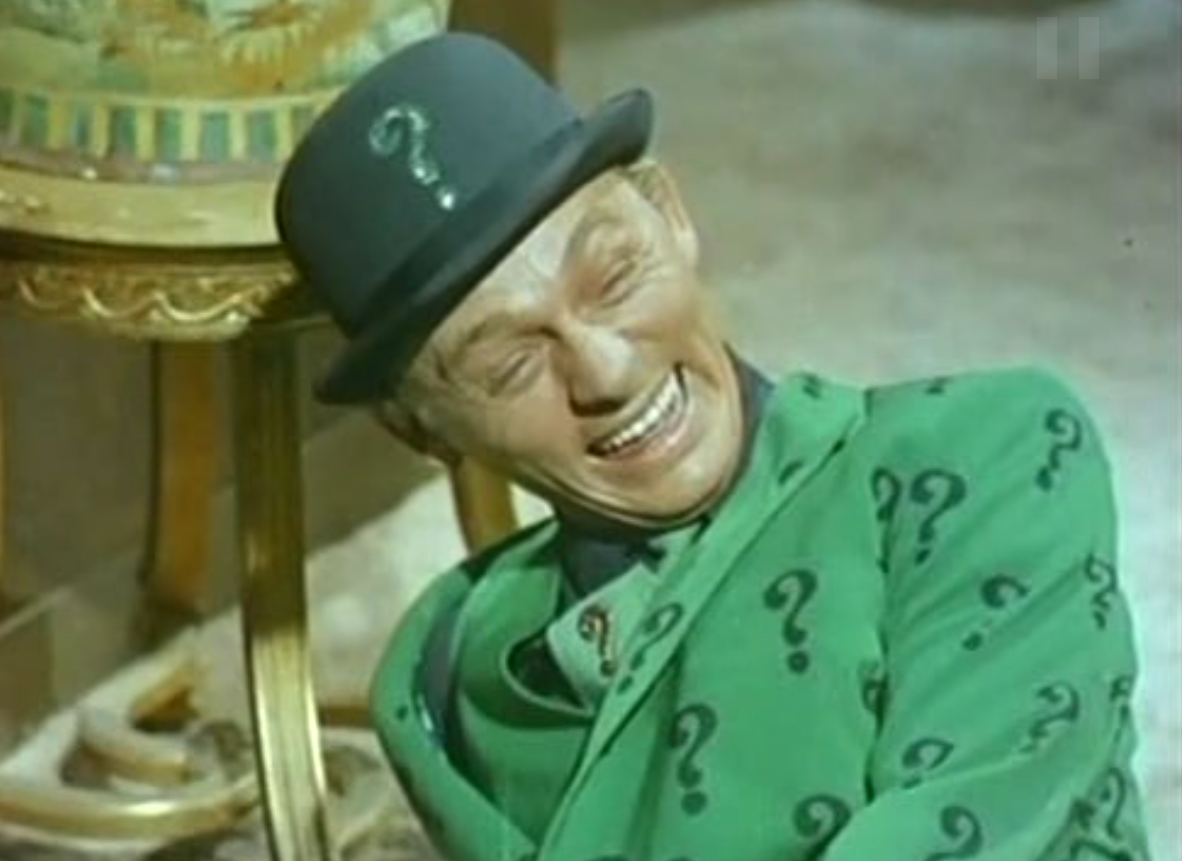
Burgess Meredith as the Penguin and Cesar Romero as the Joker each showed up three times. Catwoman, the Mad Hatter, Mr. Freeze, and False Face each appeared once, although some of them didn't quite match their comic versions. The tv series also brought in three new villains: Zelda the Great, King Tut, and Bookworm.
The “Villainesses”
Only two of the villains Batman faces are women: Zelda the Great and Catwoman.
Zelda the Great is a woman magician trying to steal a million dollars; she partnered with someone who wants to kill Batman. While they successfully trapped Batman and Robin, at the last moment, she warned them about a pair of hidden assassins with guns. The Caped Crusaders prevailed, and she and her gang were arrested. However, as a result of her change of heart, Bruce Wayne offered her a job when she gets out of prison: a position in one of the Wayne Foundation's children's hospitals as a regular performer.
Catwoman, played by Julie Newmar, purrs and hisses and slinks her way through her cat-themed crimes. Batman and Robin tracked her by covering a golden cat statue with a radioactive spray—but she was prepared; she knew they were coming and set up a trap. (The show has a lot of traps.) Batman defeated her deadly tiger by putting on his bat-earplugs (…take a drink) and then "reverses the polarity on his communicator," which, for some reason, is activated by a large button under his belt buckle, and then "increases the audio modulation to about 20,000 decibels" to disable the large cat. (Take another drink.)
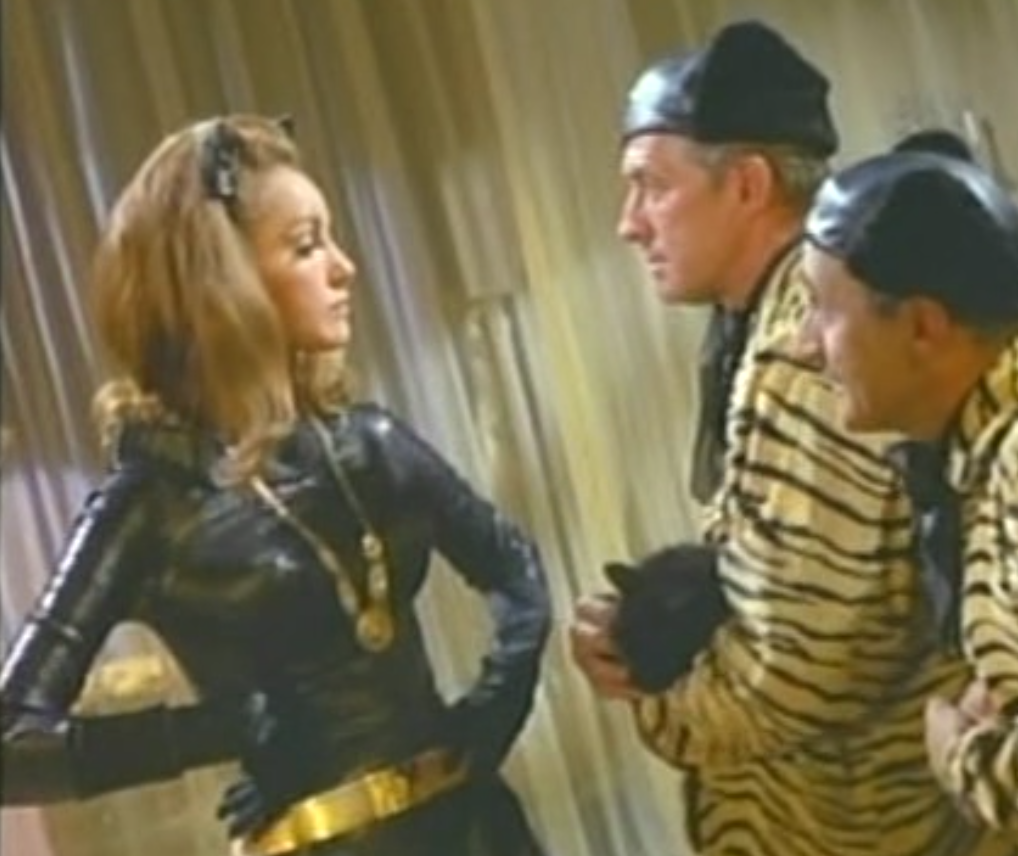
Did I mention not to watch this show for the science? Please, do not watch this show for the science.
Later in that episode: Robin awakens on a plank, balanced precariously over a pit of tigers. Looking around wildly, he declares, "Catwoman—You are not a nice person!"
Don't watch this show for the witty dialogue, either. Interesting dialogue, sometimes. But it falls short of "witty," even for pun-laden satire.
Plenty of Failure to Go Around
My friends here at the Journey don't think much of the show. Batman does not hold up well under the thoughtful analysis we normally do; it's packed with stereotypes, clichés, and all characters' endless failures to see the obvious. The women are almost all overly emotional: fearful, soft-hearted, and unwilling to see even their enemies hurt. (Catwoman is a notable exception—she shows no mercy to Batman or Robin, betrays her own sidekick, and falls, possibly to her doom, rather than lose her ill-gotten gains.) The crime-adventure stories rely on the melodramatic villains to distract you from their nonsensical plans. The show has a breathtaking ability to casually throw around horribly inaccurate details about law, finance, city life, fashion, and every possible aspect of science.

And yet. It manages to be fun. (Are you not having fun yet? You may need another drink. Perhaps a pipe loaded with something a bit stronger than tobacco.)
This is not a show to watch as an analytical reviewer, looking for insights into the human condition or the nature of society. This is not a show to watch as a serious science fiction fan, looking for innovative uses of technology to solve ancient problems. This is a show to watch as a tired reviewer, as a jaded science fiction fan, who has read a hundred books that earnestly bludgeon the reader with astute pontifications and idealized future societies where somehow, all the important people are well-educated white men who speak English.
Bruce Wayne is well-educated, rich, white, smart, talented, physically fit, noble-minded, law-abiding, conscientious, and respected by his community—the perfect classic science fiction protagonist. And he is ridiculous.
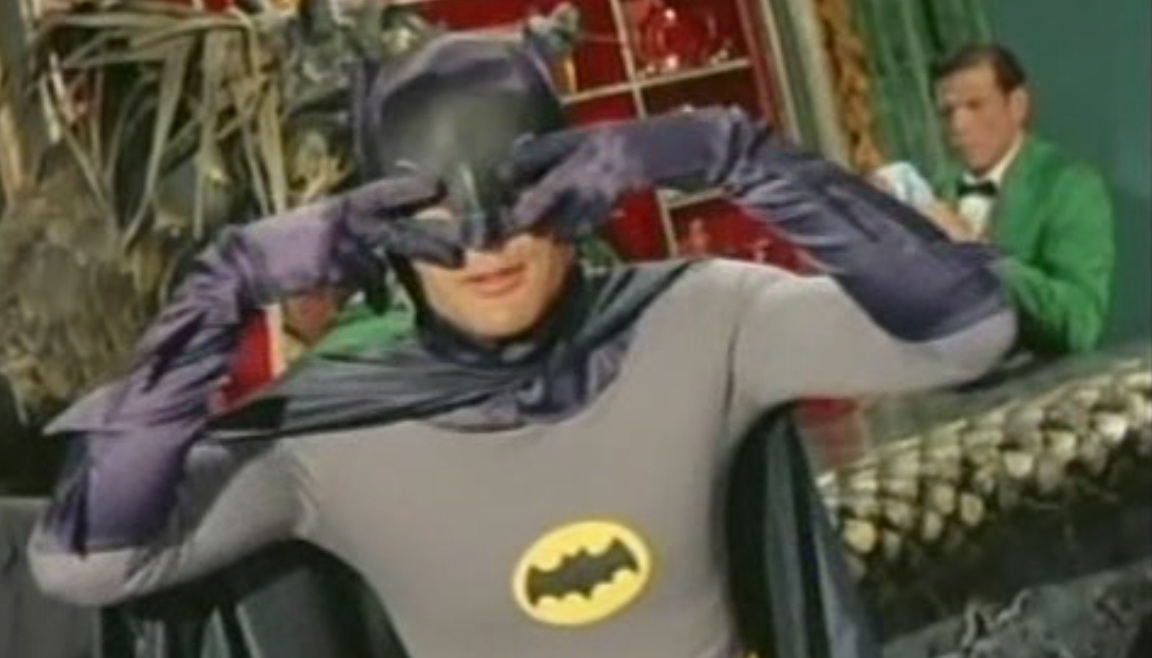
The entire show is ridiculous.
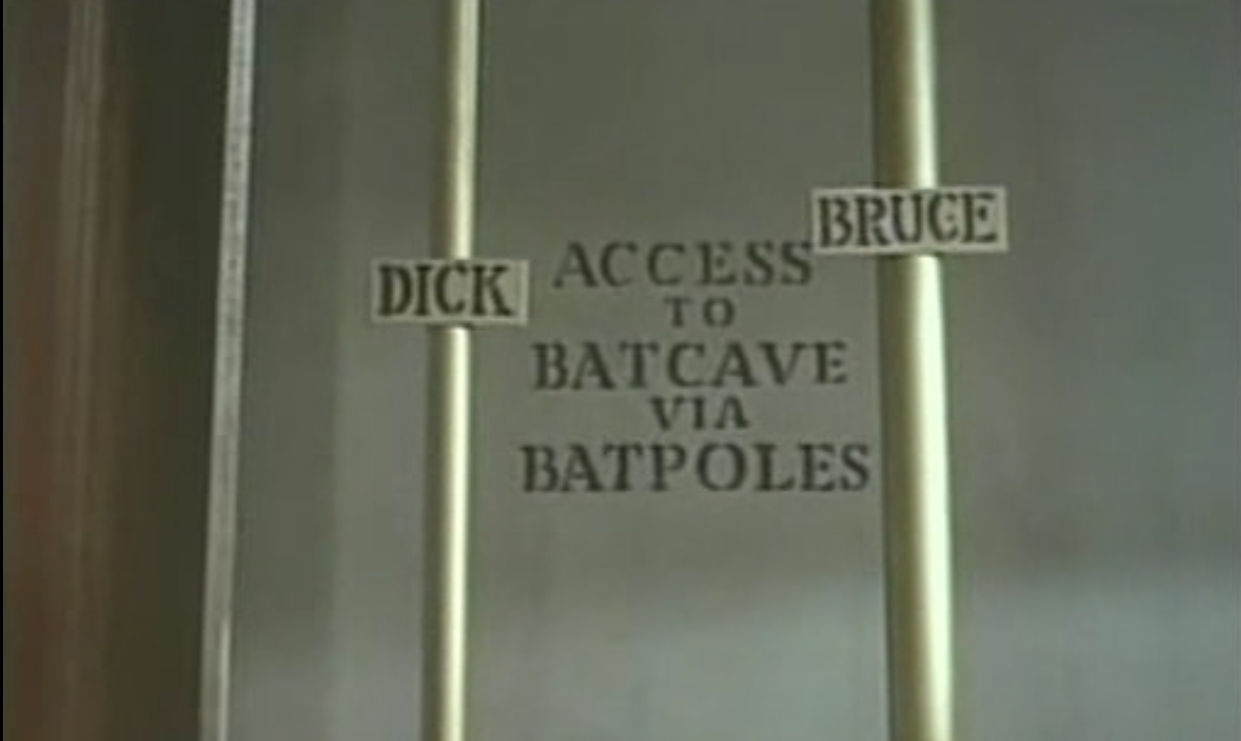
Are you having fun yet? Robin's having fun, if we allow "fun" to mean "unconscious under the influence of strange pharmaceuticals." Robin has a lot of "fun" in this show.
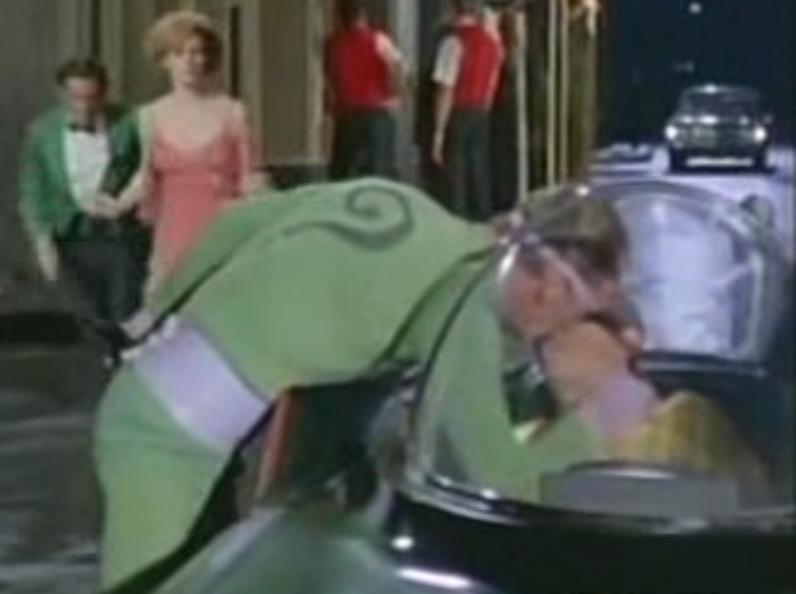
Tune in next season, same bat-time, same bat-channel, and I'll see if I can find some value in this series other than open mockery of too-serious approaches to science and technology. Even if I can't—even if all we get is silly costumes and clichéd gimmicks and Robin tied to increasingly implausible devices—I know I'll be watching the rest of the episodes.
Of course one of the songs on the Journey's radio station is the Batman theme. So tune in to KGJ, our radio station, and see if you can catch it!



They have just started airing these episodes in the UK and I think I have reached a similar conclusion. It is a show that is ridiculous, but then most comic books are also ridiculous. Absurd but revelling in the absurdity.
The young children in my neighborhood take this program quite seriously as a crime drama. Perhaps when they are older, they'll realize to their surprise that it's funny.
I kind of thought it was entertaining in the beginning. After a while it sure seemed that who ever the show runners were harbored feelings of self conscious embarrassment about comic book stories and spun the show's silliness to excuse their embarrassment.